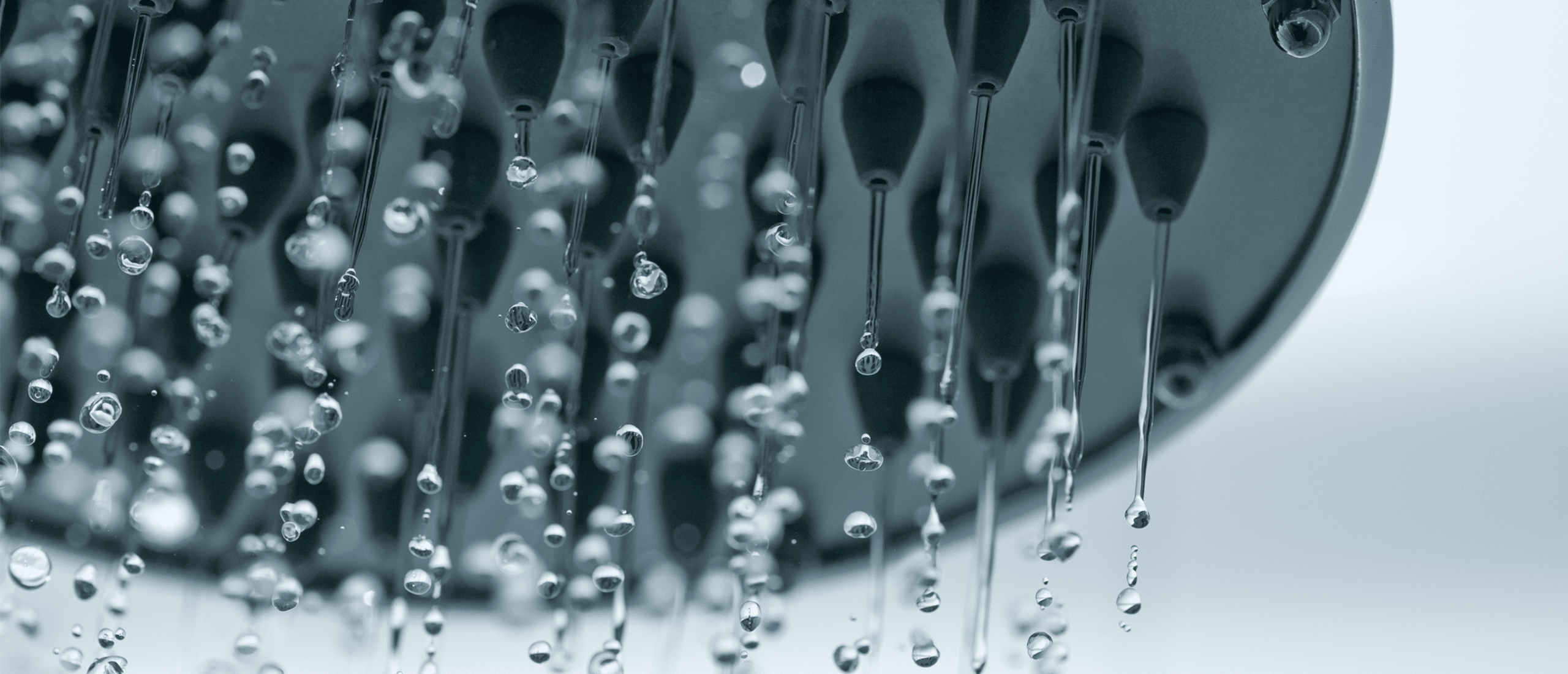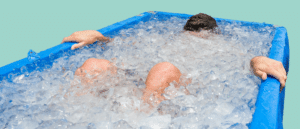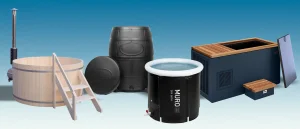Cold Shower vs. Ice Bath: Is There a Real Difference?
As exercise intensity and sophistication continue to increase, so do the ways we recover from exercise. One of the most extreme methods for doing so is cold water immersion, which may take the form of cold plunging, ice bathing, or cold showering. The cold plunge and ice bath are more or less the same—nearly whole-body dunks into frigid temperatures—while a cold shower seems a bit out of place. But is there a real difference between cold showering and ice bathing, as it relates to exercise recovery? Here’s where the science is at.
Benefits of Cold Water Therapy
Cold water therapy is a catch-all term for ice bathing, cold plunging, cold showering, and really any other use of cold water for improved health outcomes. Not privy to the why of cold water therapy? Here are a few beneficial outcomes current research (1, 2, 3) supports:
- Relieves muscle soreness
- Improves mood
- Supports better sleep
- Betters immune system
- Reduces inflammation
- Speeds up metabolism
- Increases testosterone
Differences Between Cold Shower & Ice Bath
Temperature range
Reducing temperature of the skin plays a critical role in enjoying the benefits of cold water therapy, thus the level of temperature reduction matters. Filled properly, ice baths usually land somewhere between 35 and 55 degrees Fahrenheit. Most of that range is uncomfortably cold, and unfortunately where most of the “magic” of cold water therapy happens. The issue: most showers can’t put out water below 60 degrees Fahrenheit, because the vast majority of people don’t want to suffer through a shower and extremely low water temperatures can be unsafe if you’re not ready for them.
Water coverage
It may sound obvious, but dunking your whole body into a vat of cold water provides fuller coverage than standing in a steady stream of cold water. More specifically, the superior stimulation of something called the vagus nerve is often discussed in ice bath circles. The vagus nerve is a parasympathetic system designed to bring your body back to states of relaxation and comfort. This nerve—which is really a large and long connection of nerves and tissue—runs from your neck down to your abdomen, all of which should be fully submerged in an ice bath, while only partially chilled during a cold shower. This whole-body coverage leads to a more uniform drop in skin temperature, and, generally speaking, whole-body cold water therapy has yielded greater results than partial or limited cold water therapy in research settings (4)—though it should be said that most research dedicated to whole-body vs. partial cold water therapy is concerned with dunking a person up to their eyeballs vs. isolating limbs, not necessarily ice bathing vs. cold showering. It stands to reason that a more consistent, total-body cold water exposure is superior to something less comprehensive.
Focus and safety
While there isn’t a wealth of research on this subject, it’s worth digging into. Whether you’re brand new or have years of experience under your belt with cold water therapy, you’re never truly comfortable (nor should you be) while enduring it. Being in a state of physical discomfort or suffering while standing up in a shower can be, for some people, genuinely dangerous. In that state, it’s objectively safer to be immersed in a seated position—albeit in slightly colder water than from a showerhead—rather than standing upright in a plasticky, slippery bathtub. Unfortunate as it may be, accidents can happen, as cold shock is a very real phenomenon. Being seated also allows you to focus on your breathing and reach a relaxed state more easily, which is critical for keeping yourself honest and immersed in the cold water long enough to hit your goals (generally 5 to 15 minutes depending on your experience level).
Convenience and cost
Unless you live in a place that’s cold year-round, there’s no getting around the inconveniences and costs associated with frequent ice bathing. The most common setup you’ll find recommended on the internet is some form of large stock tank filled with water and ice. Well, your refrigerator’s ice chest won’t foot even half the ice bill for a single dunk, and buying ice in bulk to fill the tank could cost hundreds of dollars a month, depending on how many ice baths you’re taking. There are cold plunge tubs that you plug in, fill with water, and have the power to regulate water temperature to ice bath levels, but these devices cost thousands of dollars.
The truth of the matter is this: cold showering is far more cost-efficient and convenient than ice bathing, but ice bathing is more effective. This makes standing in a trickling stream of cold h20 all the more painful when you consider that submerging yourself in an ice bath will probably yield better results.
Longevity Experts on Ice Baths and Cold Showers
Longevity experts like Andrew Huberman, Peter Attia, and others have held ice baths, cold plunges, and cold showers in high regard consistently for years now, but there are always caveats and best practices to follow.
In AMA #47, Attia spoke at length on the difference between cold showers and ice baths. The gist? Cold showers are basically diet ice baths: they work in a pinch, but the temperature constraints and lack of full-body immersion are downsides.
“Cold showers are a great way to habituate a person for cold water immersion,” he said. “It’s a decent practice to end your shower every morning with a little cold water.”
For one, they all recommend ice baths or cold plunging first and foremost if you can afford it.
During a recording on The Joe Rogan Experience, Huberman laid out a few rules for his own cold water protocol. For one, he said if you’re the type of person to really fear the cold, you’re likely the type of person to see the most gains from submitting yourself to it. Following current research, he also suggests 11 minutes or so per week should be plenty of cold water exposure, and it can be broken up into two or three sessions as needed, so there’s no need for extremely long bouts in an icy shower or bath.
Covered in another episode of The Drive, Attia points out that, while the benefits of cold water therapy are well-supported in most cases, those looking to increase strength or stimulate muscle growth may want to avoid it after sessions targeted at those goals.
“You’ll want to minimize your use of it after resistance training if your objectives are strength and or hypertrophy,” Attia said. “If you’re doing more high-intensity training, especially training that has a focus on eccentricity, like running, and you’re not as concerned with strength and hypertrophy, then the trade-off might be worth it.”
Cold therapy is known as a mood booster, but to date there isn’t great data to suggest why. According to both Huberman and Attia, it’s likely because the deep cold triggers a dopamine rush—the “feel good” hormone—in the brain.
The Bottom Line
Because it’s generally colder, safer, and immerses your entire body, ice bathing is nearly always the better cold water therapy treatment. That said, the cost and convenience of ice bathing can be prohibitive to many people, and cold showering still shows a great deal of promise in the realms of fitness recovery, mental health, weight loss, and anti-inflammation.















